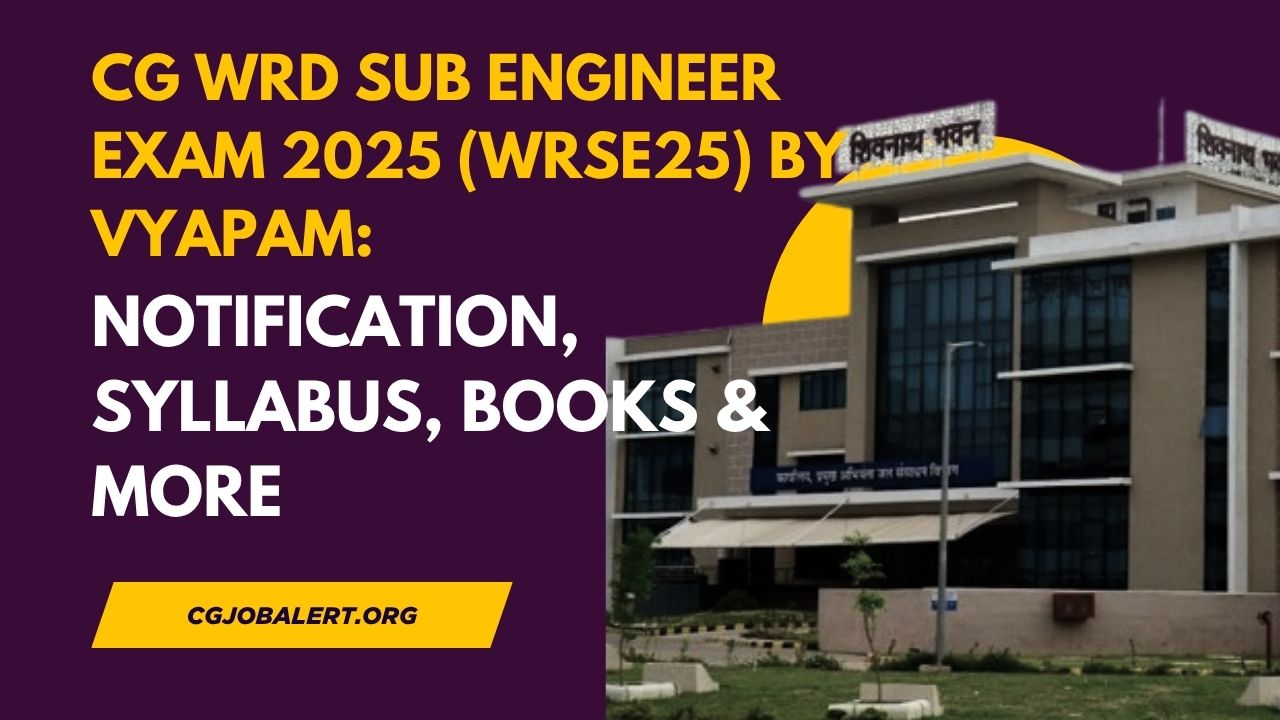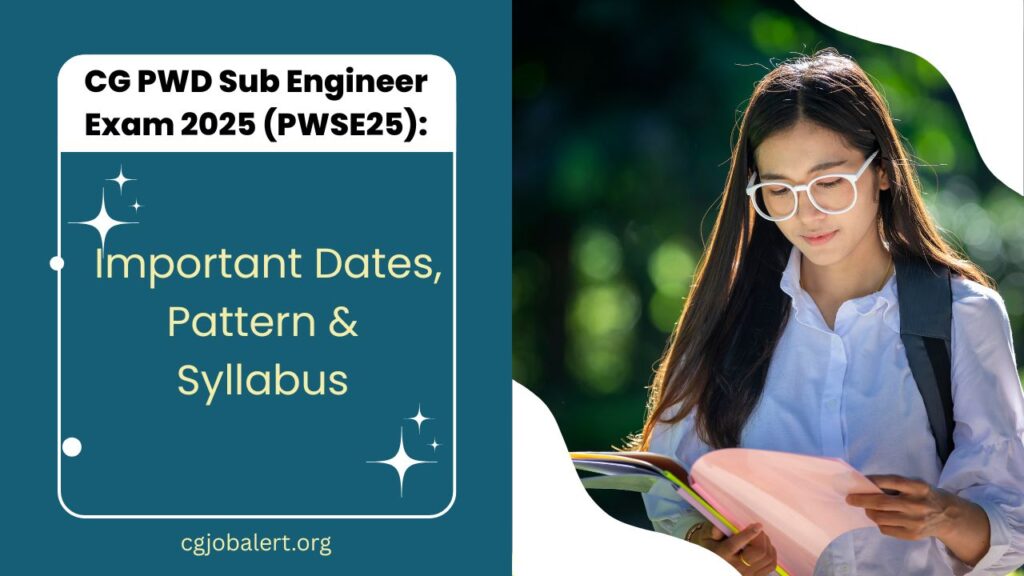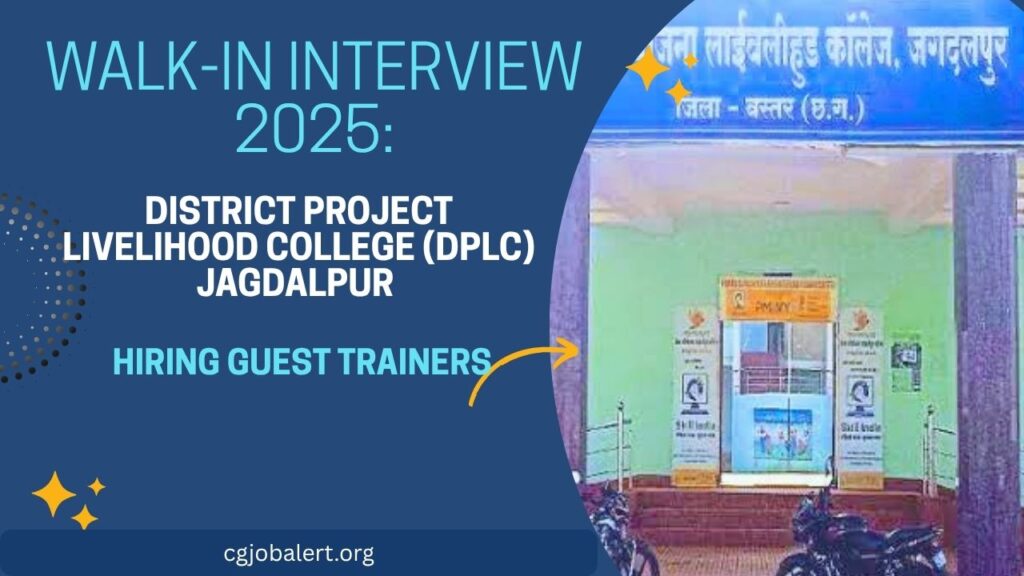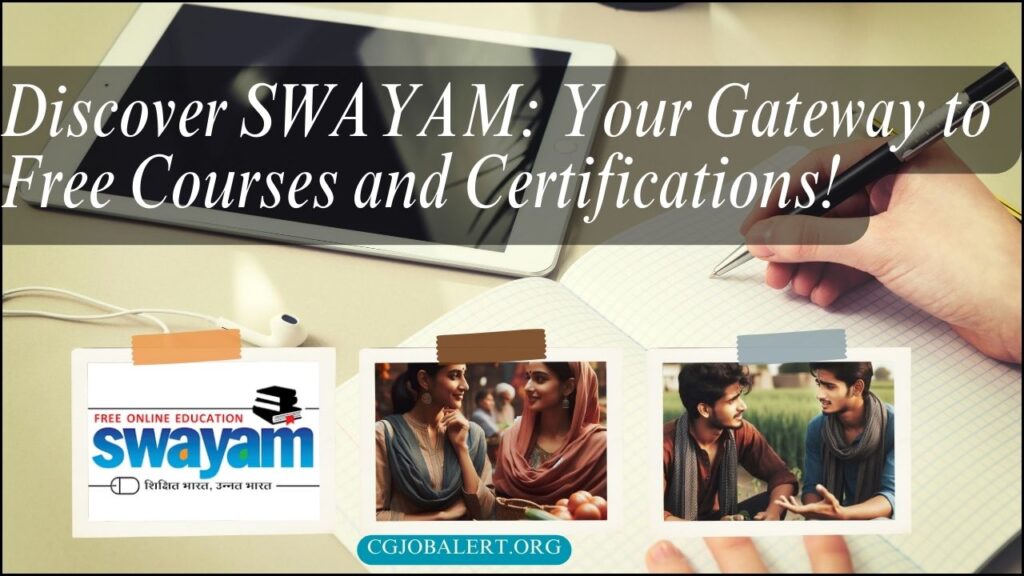Chhattisgarh Professional Examination Board (VYAPAM) is going to conduct an exam,CG WRD Sub Engineer Exam 2025, WRSE25 to fulfill vacant posts of state level of sub engineers (Civil-Backlog 08, Regular 97 posts, Electrical/Mechanical- Backlog 07, Regular 09 posts, Total 121) under state’s Water Resource Department on 20.07.2025. Applications for the same are invited from 22.05.2025 to 20.06.2025 till 5 pm.
हिंदी में पढ़ने के लिए अपनी डिवाइस स्क्रीन के ऊपरी दाएं कोने पर "Hindi" पर क्लिक करें I
Important Dates And Time Of WRSE25 Exam
| Start date to apply online | 22.05.2025 |
| Last date to apply online | 20.06.2025 |
| Mistakes correction | 21.06.2025 to 023.06.2025 till 5 pm |
| Probable day of exam | 20.07.2025 (Sunday) |
| Exam time | Forenoon |
| Issuing date of admit card | 14.07.2025 |
| Exam centres | In 5 divisional headquarter centres (Ambikapur, Bilaspur, Durg, Jagdalpur, Raipur ) |
| Apply Online | Click Here |
Official Notices Of WRSE25
Click Here to go for offical website of VYAPAM for different notices’ links.
Exam Pattern Of CG WRD Sub Engineer Exam 2025
Sub Engineer (Civil)
[Total Marks 100] [Duration 2 Hours]
SECTION A
| S.No. | Subject | Number Of Questions | Marks |
|---|---|---|---|
| 1. | General Knowledge | 10 | 10 |
| 2. | Knowledge Of Computer | 05 | 05 |
| 3. | Reasoning | 10 | 10 |
| Total | 25 |
SECTION B
| S.No. | Subject | Number of questions | Marks |
|---|---|---|---|
| 1. | Syllabus from civil engineering subject | 75 | 75 |
| Total | 75 |
Sub Engineer (Electrical/Mechanical)
SECTION A
| S.No. | Subject | Number Of Questions | Marks |
|---|---|---|---|
| 1. | General Knowledge | 10 | 10 |
| 2. | Knowledge Of Computer | 05 | 05 |
| 3. | Reasoning | 10 | 10 |
| Total | 25 |
SECTION B
| S.No. | Subject | Number of questions | Marks |
|---|---|---|---|
| 1. | Common Questions For All (Elec./Mech.) | 40 | 40 |
| Total | 40 |
SECTION C
| S.No. | Subject | Number of questions | Marks |
|---|---|---|---|
| 1. | Only For Electrical Engineering | 35 | 35 |
| 2. | Only For Mechanical Engineering | 35 | 35 |
| Total | 70 |
Syllabus Of Subjects Of WRSE25 Exam
Syllabus For Sub Engineer (Civil)
Total Questions 100
Total Marks 100
SECTION A [25 Marks]
| S.No. | Topic | Sub Topics | Number Of Questions | Marks |
|---|---|---|---|---|
| 1. | General Knowledge | i. Current events – National & International ii. Constitution of India, Political system and Indian Administrative system iii. Knowledge of Chhattisgarh, geographical location, natural resources, industries, education, administrative structure, history & culture of Chhattisgarh, ancient history, freedom struggle, major archaeological tourist centres of the state. | 10 | 10 |
| 2. | Knowledge Of Computer | i. MS Office, Spread sheets, word Processing etc. ii. Concept of hardware and software, operating system, windows etc. iii. Data analysis and chart presentation. iv. Multimedia/graphic presentation. v. Basic of internet and cloud computing. | 5 | 5 |
| 3. | Reasoning | i. Coding – Decoding ii. Number series iii. Non verbal series iv. Directions v. Decision making vi. Alphabet series vii. Clocks & calanders viii. Number ranking ix. Cube & dice x. Mirror images xi. Blood relations xii. Arithmetical reasoning xiii. Embedded figures | 10 | 10 |
SECTION B [75 Marks]
| S.No. | Topic | Sub Topics |
|---|---|---|
| 1. | Surveying | : Linear Measurement, Chain Surveying, Compass Surveying, Plane table surveying, Levelling, Contouring. Study of toposheets, Theodolite Survey, Tacheometric Surveys, Circular Curves, Electronic Theodolite, Electromagnetic Distance Measurement (EDM) |
| 2. | Construction Material | : Bricks – size & shape, Indian standard, classification and specification as per BIS-1077, testing of bricks, Fly ash bricks Aggregates classification of aggregates, coarse and fine aggregates, testing of aggregates, grading of aggregates, fineness modulus and bulking of sand. Cement Composition & properties of cement, Bouge’s compound, hydration & heat of hydration of cement, field & laboratory test of cement as per IS, type & grades of cement & its suitability, mortar, its type & suitability. |
| 3. | Concrete | Composition of concrete, its grades, types of concrete, fresh & hardened concrete & its properties, process of manufacture of concrete, testing of concrete. |
| 4. | Transportation Engineering | : Highway Alignment and Surveys. Highway geometrics, Pavement materials, Highway construction, Drainage of Roads, Bridge-Classification, Site Investigation, Bridge Substructure, Bridge Superstructure, Waterways. |
| 5. | Hydraulics | : Hydrostatics: Pressure, Pascal’s law, total pressure on horizontal, vertical and inclined surface, center of pressure, Manometer. Hydro kinematics- law of conservation of mass, continuity equation, types of flow. Hydro dynamics various forms of energy, Bernoullis’s theorem. Water discharge measurement-venturimeter, orifice meter, pitot tube, Notches and weirs, Flow through pipes characteristics of pipe flow, Darcy-weisbach equation, Expression for head losses due to friction, sudden enlargement and bends. Flow through open channel – Wetted perimeter, hydraulic mean depth, hydraulic gradient, Chezy’s formula. Manning’s formula Geotechnical Engineering:- Weight and Volume relationships of soil; IS classification soil; Index properties, Permeability: Well hydraulic; Shear strength; Earth pressure, cohesion less soil; Bearing capacity-definitions and plate load test. |
| 6. | Hydrology | : Definition, Hydrological, cycle, water budget equation, catchment area, Precipitation, forms of precipitation, measurement of rainfall, rain gauge and types, gauge density as per IS and world meteorological organization, computation of average rainfall over a basin, annual rainfall. Losses from precipitation, evaporation, infiltration, runoff, factors affecting runoff, computation of runoff, hydrograph, unit hydrograph, peak flow determination, Stream measurement- area velocity method, Weir method, Stage discharge curve. |
| 7. | Water Resource Engineering | Water Requirement of crops. Reservoir Planning, Purposes of reservoir, classification of reservoir based on purpose, investigation for reservoir planning. Engineering surveys’, area elevation curve, storage elevation curve, Geological investigation, Hydrological investigation, factors affecting selection of site for a reservoir: Zones of storages and various water levels, storage capacity and yield of reservoir. Dams- various types of dam, Factors governing the selection of type of dam, Factors for selection of site for a dam. Earthen Dams, Gravity Dams, Spillway, Diversion Headwork, Canal Irrigation System- Canals, canal outlets, Canal Regulation works, Cross Drainage Works (Only Components and their functions), Canal lining and New irrigation techniques such as Drip Irrigation and Sprinkler Irrigation, lift irrigation. |
| 8. | Public Health Engineering | Quantity of Water Population Forecast, Water Demand Source of Water – Surface sources, Ground water, yield of well, Quality of water- Physical, Chemical and Microbiological tests; Treatment of water Sedimentation, Filtration, Water softening, Disinfection; Collection and Conveyance of sewage, House Drainage. |
| 9. | Structural Engineering | Stress and strain, Bending moments and Shear Forces in simply supported, cantilever, fixed, and continuous beams; Slopes and deflection in cantilever and simply supported beam, Stresses in beams, axially loaded column-Euler’s formula, RCC Design (Limit State Method IS 456:2000)- Design of singly and doubly reinforced RCC beams. Design of retaining Wall and Weir. |
| 10. | Estimating And Costing | Estimate for construction of Dams, canal & canal structures. Estimate for a building, Estimate of water supply and sanitary works, Earthwork for roads, Rate analysis, Estimate of RCC work, Estimate of steel and timber roof trusses, Valuation- types of values, depreciation. |
| 11. | Construction Management | Organisation of civil works department, its structure & working, important formats of measurements, payment & bills, Gantt Chart, CPM network. |
Syllabus For Sub Engineer (Electrical/Mechanical)
SECTION A [25 Marks]
| S.No. | Topic | Sub Topics | Number Of Questions | Marks |
|---|---|---|---|---|
| 1. | General Knowledge | i. Current events – National & International ii. Constitution of India, Political system and Indian Administrative system iii. Knowledge of Chhattisgarh, geographical location, natural resources, industries, education, administrative structure, history & culture of Chhattisgarh, ancient history, freedom struggle, major archaeological tourist centres of the state. | 10 | 10 |
| 2. | Knowledge Of Computer | i. MS Office, Spread sheets, word Processing etc. ii. Concept of hardware and software, operating system, windows etc. iii. Data analysis and chart presentation. iv. Multimedia/graphic presentation. v. Basic of internet and cloud computing. | 5 | 5 |
| 3. | Reasoning | i. Coding – Decoding ii. Number series iii. Non verbal series iv. Directions v. Decision making vi. Alphabet series vii. Clocks & calanders viii. Number ranking ix. Cube & dice x. Mirror images xi. Blood relations xii. Arithmetical reasoning xiii. Embedded figures | 10 | 10 |
SECTION B [40 Marks]
Common For All (Electrical/Mechanical) [ Total Questions 40, Marks 40]
| S.No. | Topic | Sub Topics |
|---|---|---|
| 1. | Applied Physics | (a) Measurement of vectors. (Fundamental units, derived units, unit system, S.I. Units) force, motion and gravitation, classification of motion (characteristics of different type of motion. Newton’s law of motion, speed, velocity, Acceleration, equation for motion and friction, circular and rotary motion. (b) High temperature measurement, kinetic theory of gases. (c) Thermo Dymanics, 1st law of thermodynamic, Isothermic adiabatic changes and latent heat. |
| 2. | Applied Chemistry | (a) Metal and metallurgy, its alloy, corrosion and protection (i) Occurrence, extraction, properties and engineering uses of metal with it’s alloy. (ii) Corrosion, Cause of corrosion and its control. (b) Fuel Explosive, classification and application. (c) Water treatment. (d) pollution-meaning, Causes of pollution, effect and Prevention. |
| 3. | Applied Mechanics | (a) Work, power and Energy. Definition, form of energy, Conservation of power energy, power of engine and pumps, relation between heat and Mechanical works. (b) Simple lifting machines Law of Machine, study of machine, wheel axle, pulley, jacks worm and worm wheel. (c) Transmission of power. Transmission of power through belt, rope and gear, gear train, spur helical, bevel gears. |
| 4. | Strength Of Material | (i) Simple stress & strain. Introduction, type of stress and strain etc. (ii) Mechanical properties & testing of materials, Definition, necessity of testing, type of test etc. |
| 5. | Thermal Engineering | (1) Basic concept of thermodynamics, I and II law of thermodynamics. (ii) Internal combustion engines (Introduction, function of two strokes, four strokes, efficiency, Mechanical Efficiency, Lubrication of I.C. Engine. (iii) Air compressor, classification and its application. (iv) Heat Transfer-Modes of Heat Transfer and its application. |
| 6. | Basic Electrical Engineering | (1) D.C. circuit- Ohm’s law, Resistance and Resistivity, Kirchhoff’s law, Series and Parallel Combination of Resistance. |
| 7. | Electromagnetism | (i) EMF due to electric current in conductor, Magnetic field due to a coil, magnetic field due to solenoid, force on a current carrying conductor, Fleming left hand rule. Electromagnetic Induction, faraday’s laws of electro-Magnetic induction, Fleming right hand rule, self induction, mutual induction, Alternating voltage and current, three phase circuit. |
| 8. | Transformer | Principle of operation of Transformer, Transformer Ratio, Transformer on load, effect of core losses, effect of magnetization, eddy current loss, Hysteresis loss, efficiency of Transformer, D.C. machine, motor and three phase induction motor principle of working of induction motor, Starting of induction motor. |
| 9. | Theory Of Machines | Introduction of theory of machine, velocity, acceleration and friction, fly wheel, and crank efforts, power transmission gears and gear train, Governor Cam and followers etc. Lathe, Boring, Milling, Machines, Grinding & finishing process, jigs & Fixtures, machine tools etc. |
| 10 | Fluid Mechanics And Hydraulics | (i) Fundamental of Fluid flow and Pressure and its measurements. Basic equations of fluid flow. (ii) Pumps-Types of pumps and selection of Pumps. |
SECTION C [Number Of Questions 35, Marks 35]
Only For Electrical Engineering
| S.No. | Topic | Sub Topics |
|---|---|---|
| 1. | Introduction To A.C. Machines | Overview of AC Machines Difference between A.C. & D.C. machines. |
| 2. | Basic Features Of A.C. Machines | Parts of A.C. Machine & their functions Materials for the various parts Stator & rotor windings |
| 3. | Alternators | Types of alternators Principle & EMF equation Winding factors & its effect on induced EMF. Effect of speed & excitation on induced EMF. Different excitation systems Excitation system used in modern alternators Concept of leakage, armature & synchronous reactance Principle of working of brushless alternators Applications |
| 4. | A.C. Motors | Types of A.C. motors Stator & rotor parts, function, windings Concept of rotating magnetic fields Stator & rotor current equations Effect of frequency on slip Torque equations Condition for maximum torque Circle diagram Necessity of induction motor starters and different types Different types of induction motors |
Only For Mechanical Engineering
| S.No. | Topics |
|---|---|
| 1 | Introduction |
| 2 | Fundamentals of Estimating |
| 3 | Estimation of Material Cost |
| 4 | Introduction (Vehicle Layouts and Types) |
| 5 | Automobile Engines (Power Plant) |
| 6 | Fuel Systems for Petrol Engine |
| 7 | Fuel System for Diesel Engine |
| 8 | Auto-Electric System |
| 9 | Transmission & Propeller Shaft |
| 10 | Final Drive & Rear Axle |
| 11 | Steering & Front Axle |
| 12 | Brakes |
| 13 | Suspension Systems |
| 14 | Wheels and Tyres |
How To Apply For CG WRD Sub Engineer Exam 2025 (WRSE25) ?/ How To Register In CG Vyapam ?

How to Register on CG Vyapam: A Step-by-Step Guide
To register on the Chhattisgarh Vyapam (CG Vyapam) portal, you first need to visit its official website: vyapam.cgstate.gov.in. Once there, look for the option that says “New Registration” or “New User Registration” and click on it.
You’ll then be asked to fill in some basic details like your name, email address, mobile number, and any other required information. After that, create a username and password to complete your registration.
Once your registration is successful, you’ll be able to apply for various examinations and recruitment processes available on the Vyapam portal.
Detailed Steps:
- Visit the Official Website:
Go to vyapam.cgstate.gov.in. - Find the Registration Option:
Click on “New Registration” or “New User Registration”. - Fill in Your Details:
Enter your name, email ID, mobile number, and other required information. - Create a Username and Password:
Choose a secure username and password for your account. - Complete the Registration:
Submit the form and activate your account. - Apply for Exams:
Once registered, you can apply for different exams and recruitment posts listed on the CG Vyapam website.
Important Notes:
- Make sure you have a valid email ID and mobile number before registering.
- Choose a strong password to keep your account secure.
- After completing the registration, you will receive an activation link or code on your registered email or mobile number. Follow the instructions to activate your account.
- For further assistance, you can check the Help section on the CG Vyapam website or contact their helpline number.
Books For CG WRD Sub Engineer Exam 2025

| S.No. | Subject | Book Title | Publication/Author | Buy Online |
|---|---|---|---|---|
| 1. | General Knowledge | Arihant Chattisgarh Samanaya Gyan | Arihant | Click Here To Buy On Amazon |
| 2. | Knowledge Of Computer | Arihant Revised edition of Computer Awareness for 2025 SSC, Railway, Banking, DSSSB, & Other One Day Exams | With Free Online Tests | Arihant | Click Here To Buy On Amazon |
| 3. | Reasoning | A Modern Approach to Logical Reasoning | Dr. R.S. Aggarwal | Click Here To Buy On Amazon |
| 4. | Civil Engineering | GKP SSC JE 2025 : Junior Engineer – Civil Engineering – Guide (Includes Solved Papers from 2017-24) Cg vyapam sub engineer civil book : cg vyapam sub engineer question practice book 2021-2022 | GPK Sandeep Kumar Singh | Click Here To Buy On Amazon Click Here To Buy On Amazon |
| 5. | Electrical Engineering | GKP SSC JE 2025 : Junior Engineer – Paper I – Electrical Engineering – Guide (Includes Solved Papers from 2017-24) | GPK | Click Here To Buy On Amazon |
| 6. | Mechanical Engineering | GKP SSC JE 2025 : Junior Engineers – Mechanical Engineering – Guide (Includes Solved Papers from 2017-24) | GPK | Click Here To Buy On Amazon |
Previous Years’ Question Papers Of Different Engineering Exams For Practice
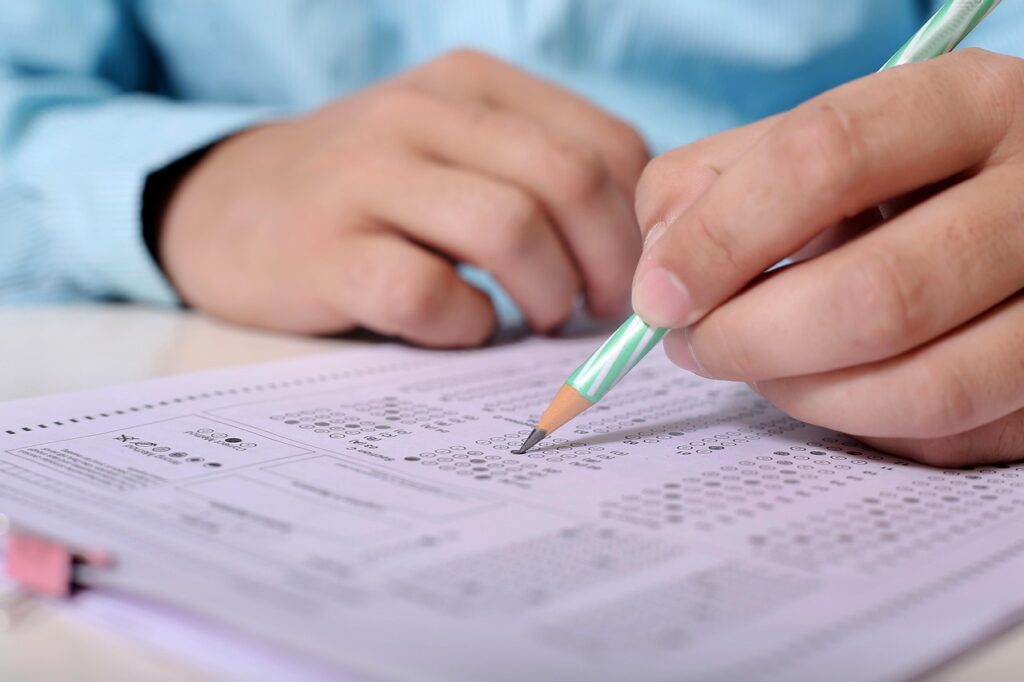
| S.No. | Subject | Exam Name | Links To Download Papers |
|---|---|---|---|
| 1. | Civil | EBJE23 WRSE22 CSE18 EAE17 | Click Here Click Here Click Here Click Here |
| 2. | Electrical | EBJE23 CSE18 | Click Here Click Here |
| 3. | Mechanical | EBJE23 CSE18 | Click Here Click Here |
Position of a Sub Engineer in Chhattisgarh Water Resources Department (CG WRD)
In the Chhattisgarh Water Resources Department (WRD), Sub Engineers—whether in Civil, Electrical, or Mechanical disciplines—hold a pivotal role within the technical cadre. They are classified under Class III posts and are integral to the execution and supervision of various infrastructural projects.
Hierarchy in CG WRD
The internal organizational hierarchy in CG WRD for engineering posts typically follows this structure:
- Class I:
- Engineer-in-Chief
- Chief Engineer
- Superintending Engineer
- Executive Engineer
- Class II:
- Assistant Engineer
- Class III:
- Sub Engineer (entry-level technical post)
Sub Engineers report to Assistant Engineers, who work under the Executive Engineers. The overall supervision flows upward to Superintending Engineers and then to the Chief Engineer or Engineer-in-Chief.
Career Progression of Sub Engineers in CG WRD
The career path for Sub Engineers includes both promotion opportunities and departmental exams. The general progression is:
- Sub Engineer (Class III)
- Assistant Engineer (Class II) – through departmental promotion or qualifying exam
- Executive Engineer (Class I) – based on performance and seniority
- Superintending Engineer / Chief Engineer – for those with long service and consistent promotion
Conclusion
A Sub Engineer in CG WRD holds a respected technical position with opportunities for long-term career growth, stable income, and promotion to higher posts like Assistant Engineer and beyond. With consistent performance and departmental exam success, one can rise to senior Class I roles in the Water Resources Department.
Summary
| Rank | Position | Entry Route | Typical Timeframe |
|---|---|---|---|
| 1 | Sub Engineer | Diploma + Exam (CG Vyapam) | Entry-level |
| 2 | Assistant Engineer | Promotion or Direct (B.E./B.Tech) | 8–10 yrs |
| 3 | Executive Engineer | Promotion from AE | 15–20 yrs |
| 4 | Superintending Engineer | Senior Officer | Varies |
| 5 | Chief Engineer | Top-level | Merit-based |
| 6 | Engineer-in-Chief | Head of WRD | Rarely attained |
FAQs
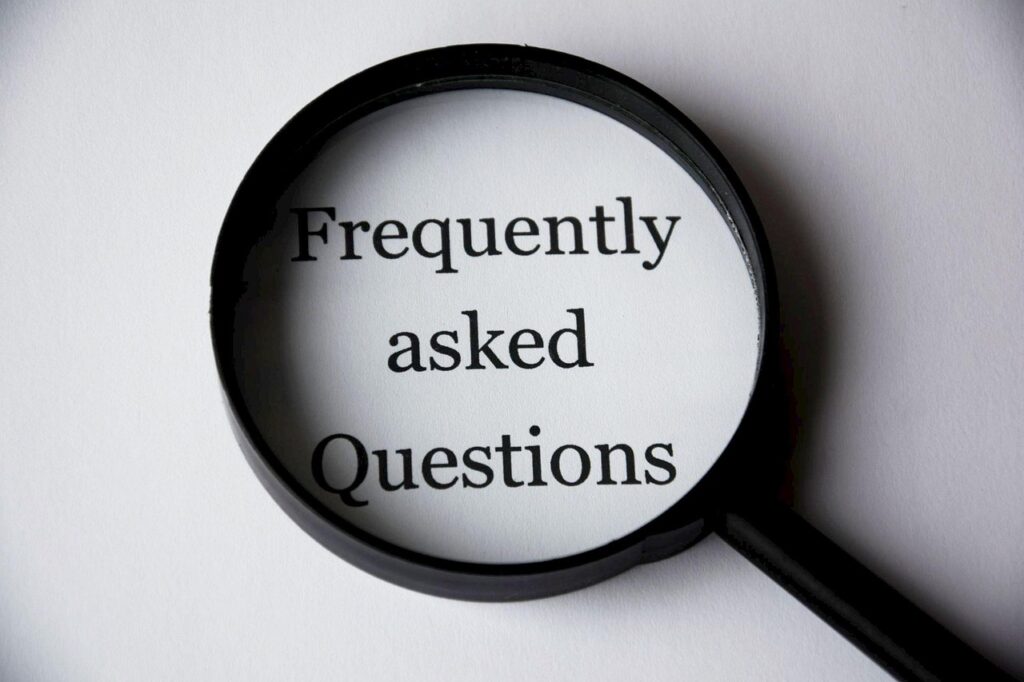
What are the branches eligible for the Sub Engineer post?
Sub Engineer posts are available for Civil, Electrical, and Mechanical engineering diploma or degree holders.
Who conducts the Sub Engineer recruitment exam for CG WRD?
The recruitment exam is conducted by CG Vyapam (Chhattisgarh Professional Examination Board).
What is the selection process for CG WRD Sub Engineer?
The selection is based on a written examination followed by document verification.
In which language is the exam conducted?
The paper is available in Hindi and English.
Other Articles:

